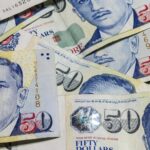Gold was little changed on Thursday as investors weighed monetary easing in China and the Eurozone against the prospects for higher interest rates in the US. Silver fell, while platinum and palladium were steady. Copper slid on fears of lower demand from top consumer China, with ANZ cutting its price outlook for industrial metals.
Comex gold for delivery in April was down 0.04% at $1 264.0 per troy ounce at 10:18 GMT, shifting in a daily range of $1 274.6-$1 263.7. The precious metal ended the previous session with a 0.33% gain to $1 264.5.
Greece’s anti-austerity Syriza party, which had promised to wipe off the majority of the country’s debt during its election campaign, proposed to swap its old debt with new bonds that would be repaid as the country’s economy expands.
However, the European Central Bank said in a press release issued late Wednesday that it will stop accepting Greek sovereign debt as collateral for its liquidity operations starting February 11th.
The decision was based on the assumption that there will be no successful conclusion to Greece’s negotiations with creditors, ECB said. The move will increase funding expenses for Greece’s commercial banks, while also putting them under close observation by the central bank.
On Thursday, Greece’s Finance Minister Yanis Varoufakis said in a statement that the decision “does not reflect any negative developments in the country’s financial sector.”
The news came out just a few hours following the meeting between Mr. Varoufakis and ECB’s president Mario Draghi in Frankfurt. Mr. Varoufakis is also meeting with Wolfgang Schaueble, Germany’s finance minister, later today. Previously, Greece’s finance minister met with officials from the UK and France.
“We think the Greek issue will likely stir things up for a little while longer in the markets, which is why we think gold should benefit, likely at the expense of equities,” INTL FCStone analyst Ed Meir said in a note, cited by CNBC.
Last moth, the International Monetary Fund reduced its projection of global growth.
In the US, data by Automatic Data Processing showed yesterday that private non-farm employers added 213 000 jobs in January, while the Labor Department is expected to report today that the number of Americans who filed for initial unemployment benefits last week rose to 290 000 from 265 000 the previous period.
Analysts now eyed Friday’s all-important jobs report, with the Labor Department expected to report non-farm payrolls at 234 000, while the unemployment rate likely remained unchanged at a multi-year low of 5.6%.
A robust report will help slightly offset increasing speculations that the Federal Reserve will hold back on raising interest rates. An eventual rate hike would boost the strength of the dollar, while also denting demand for the yellow metal.
The US dollar index for settlement in March was up 0.09% at 94.250 at 10:18 GMT, holding in a daily range of 94.665-94.230. The US currency gauge edged up 0.47% on Wednesday to 94.165. A stronger greenback makes dollar-denominated commodities more expensive for holders of foreign currencies and curbs their appeal as an alternative investment, and vice versa.
Assets in the SPDR Gold Trust, the biggest bullion-backed ETF, climbed 2.99 tons on Wednesday to 767.93 tons, their highest since early October. Changes in holdings typically move gold prices in the same direction.
Copper
Copper dropped after rising for two days amid fears of slowing demand from the worlds top metals consumer China.
Comex copper for delivery in March traded 1.91% lower at $2.5415 per pound at 10:16 GMT, having ranged between $2.5960 and $2.5360 during the day. The contract rose 0.37% to $2.5910 on Wednesday.
Australia & New Zealand Banking Group Ltd. slashed its 2015 price outlook for industrial metals on expectations for further economic headwinds for top consumer China. The bank cut its estimate for copper and tin by 19%, while lowering the outlooks for lead and nickel by 17%.
“With the likelihood of further weakness in economic growth in China, the headwinds for base metal markets are unlikely to ease,” the bank said in the report.
This comes after the Chinese economy expanded at the slowest pace since 1990 last year, while government data showed the first contraction in the countrys manufacturing sector in January in more than two years. Private data provided by HSBC and Markit Economics showed a second straight monthly contraction in activity at manufacturers, while services sector growth fell to a six-month low.
Some support was drawn on hopes of further monetary easing by the People’s Bank of China after the central bank yesterday reduced its minimum reserve requirement ratio by 1% to 19.5%.
Investors now shifted their focus to the upcoming US jobs report to gauge the US economys strength, after data by the Institute for Supply Management yesterday showed better-than-expected growth in the US services sector, although employment figures by ADP came in below projections.





